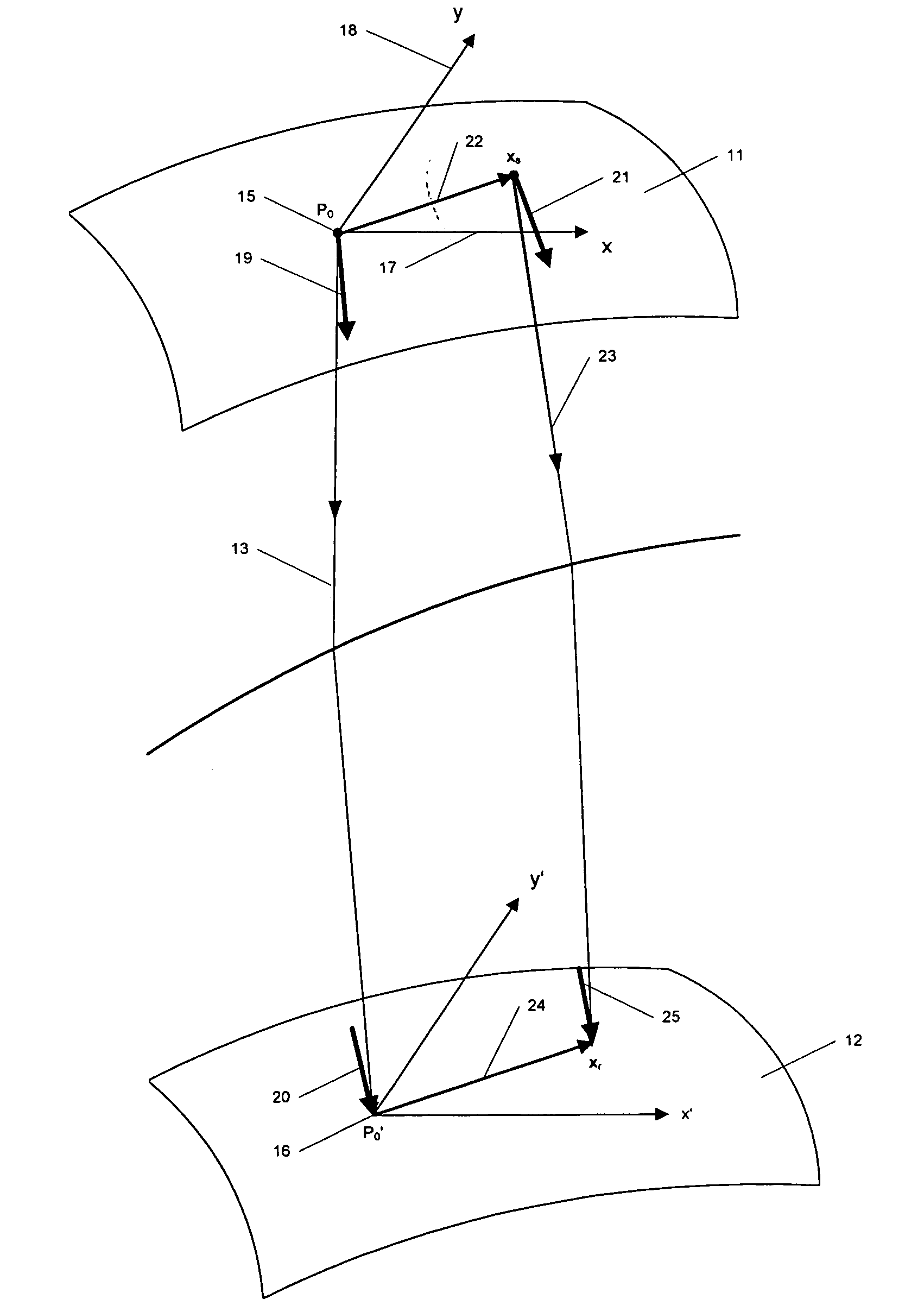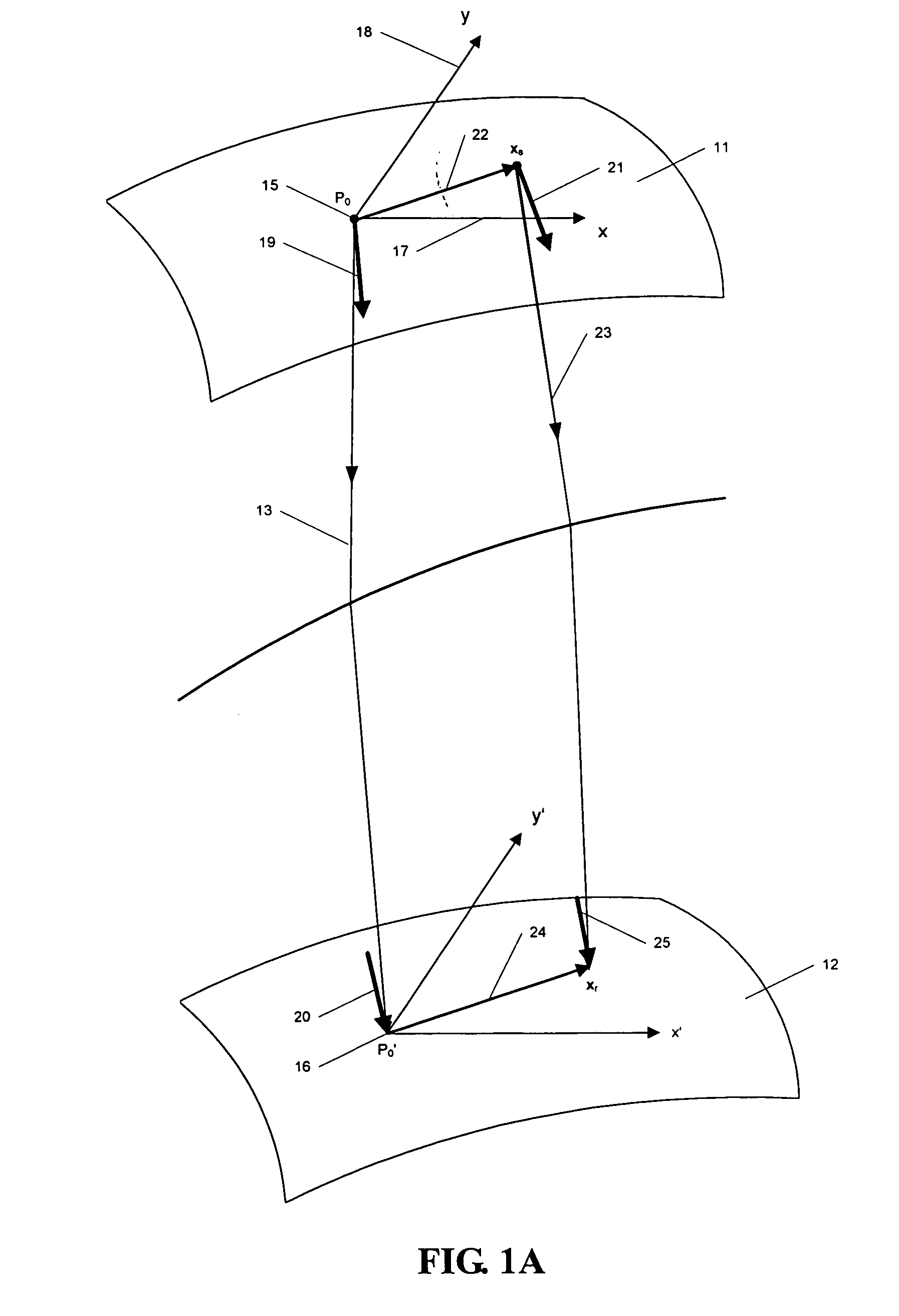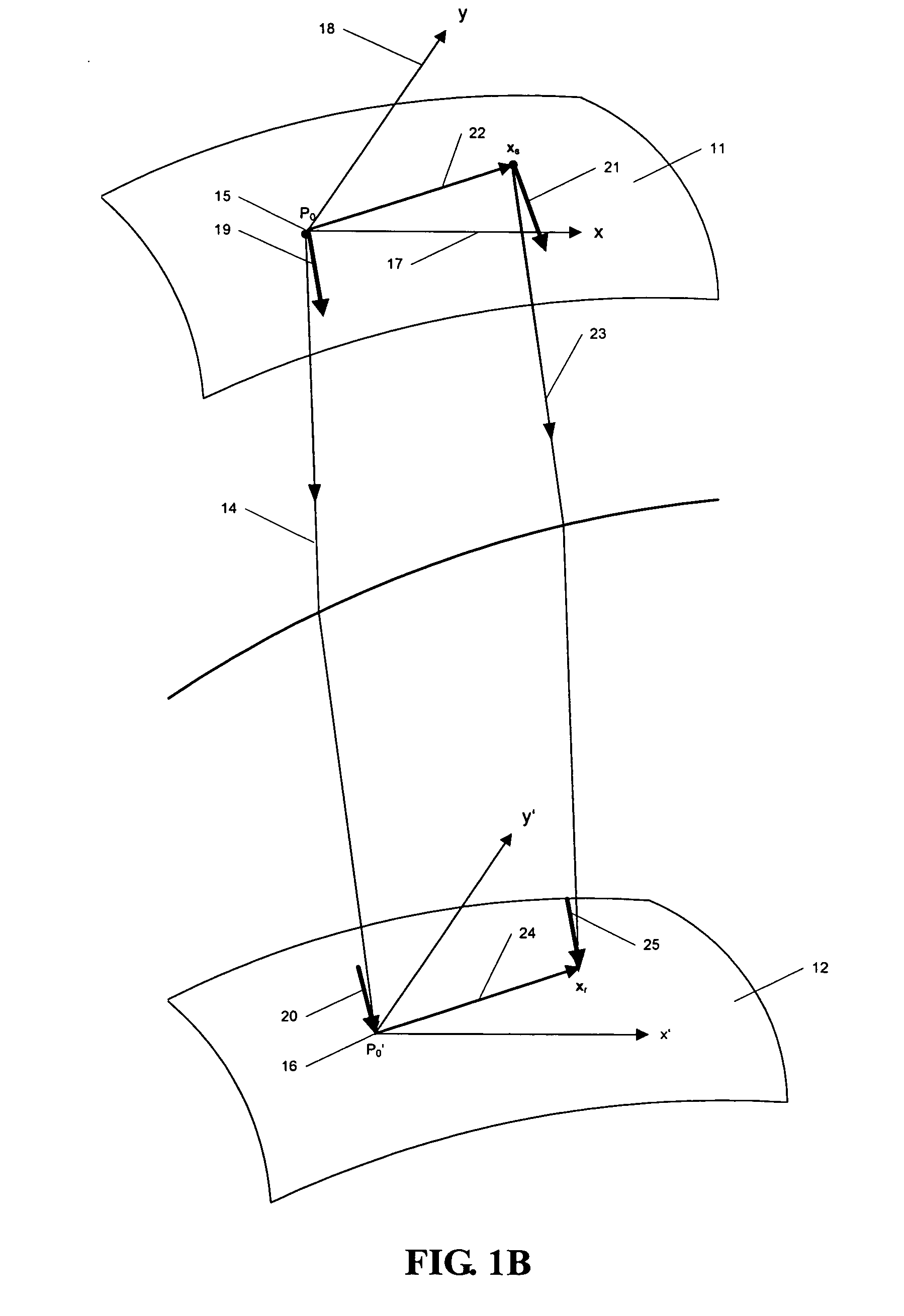Method for multi-azimuth prestack time migration for general heterogeneous, anisotropic media
a general heterogeneous anisotropic media and time migration technology, applied in the field of geophysical prospecting, can solve the problems of inability to effectively azimuth-dependent moveout analysis, difference in elastic impedance at the interface, and increasing complexity of seismic data gathering operations
- Summary
- Abstract
- Description
- Claims
- Application Information
AI Technical Summary
Benefits of technology
Problems solved by technology
Method used
Image
Examples
Embodiment Construction
[0029]Conventional prestack time migration (PSTM) velocity analysis from one predominant azimuth direction allows determining diffraction time functions solely in one azimuth direction. As a consequence, it allows building 3D migration operators only for horizontally layered media, which have an axis of symmetry along the z-axis. Extending the migration method to handle general heterogeneity and anisotropy requires asymmetric diffraction time functions. The diffraction time function, in the present invention, is derived from the most general form of Hamilton's principal equation and is approximated by a Taylor expansion in the vicinity of the image ray. The Taylor coefficients are derived from multi-azimuth imaging parameters. The second-order coefficients, for example, are obtained from azimuth-dependent time migration velocity analyses in at least three predominant azimuth directions. The multi-azimuth prestack time migration operator obtained is valid for general three-dimensiona...
PUM
 Login to View More
Login to View More Abstract
Description
Claims
Application Information
 Login to View More
Login to View More - R&D
- Intellectual Property
- Life Sciences
- Materials
- Tech Scout
- Unparalleled Data Quality
- Higher Quality Content
- 60% Fewer Hallucinations
Browse by: Latest US Patents, China's latest patents, Technical Efficacy Thesaurus, Application Domain, Technology Topic, Popular Technical Reports.
© 2025 PatSnap. All rights reserved.Legal|Privacy policy|Modern Slavery Act Transparency Statement|Sitemap|About US| Contact US: help@patsnap.com



